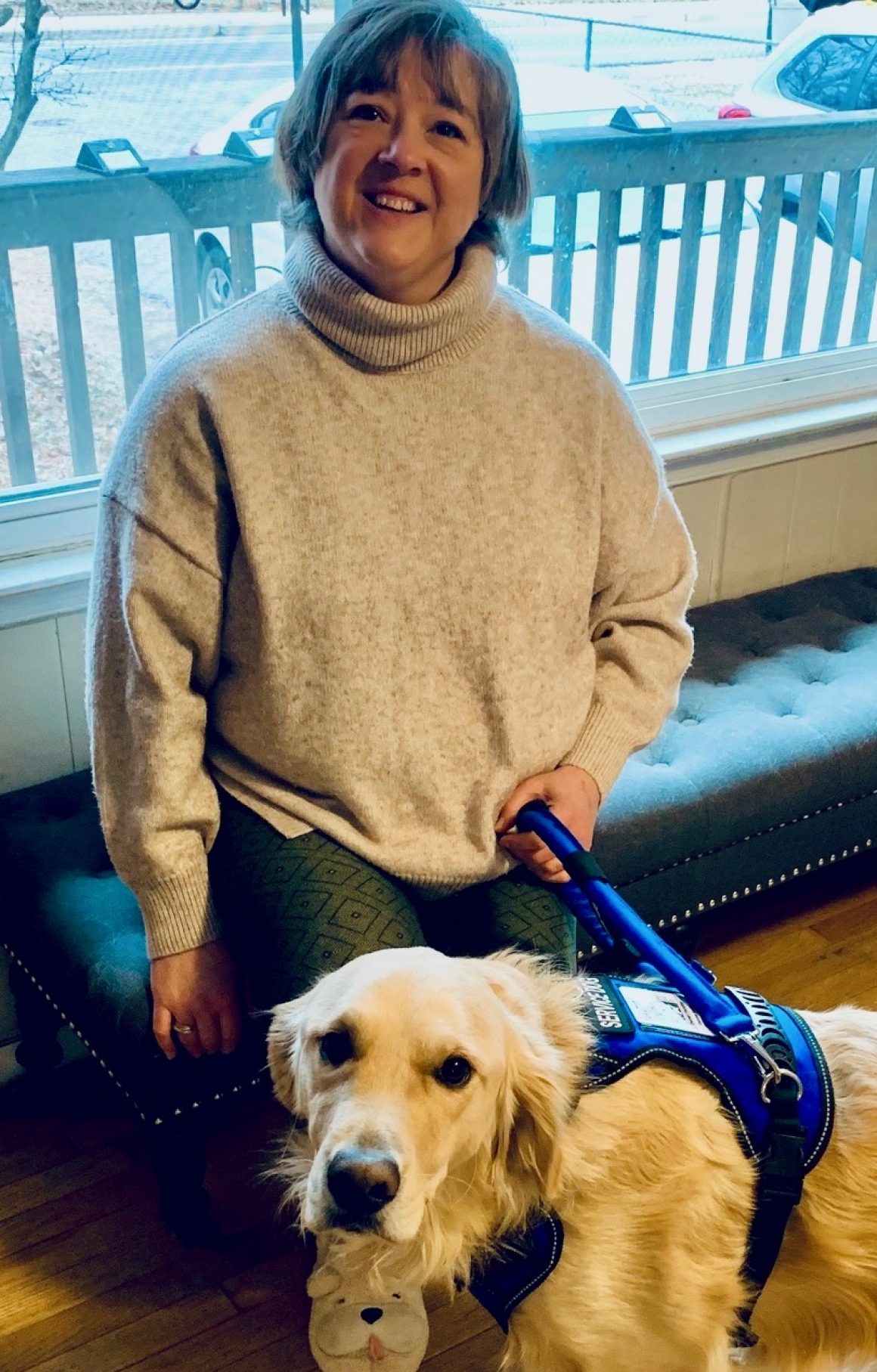 Yesterday I went into Wolf Furniture to look at some furniture. Our den furniture, ancient and worn, has also been destroyed by three furry felines. I’ve done some research on “kitty friendly” fabrics, and so decided to do some shopping to get an idea of prices.
Yesterday I went into Wolf Furniture to look at some furniture. Our den furniture, ancient and worn, has also been destroyed by three furry felines. I’ve done some research on “kitty friendly” fabrics, and so decided to do some shopping to get an idea of prices.
When I pulled into the parking lot, my hearing assistance dog, Chloe, began barking! I realized she was bristling at a big, black, iron bear in front of the furniture store. Unfortunately, this picture doesn’t show the bear. (Scratching head and puzzlin’ over it… why a bear and not a wolf?)
It took me a few minutes to get into the store, as I needed to reassure Chloe that the bear wasn’t real. My daughter, Kyersten, was with me and went over and “loved on it”. (as they say in the South) That seemed to convince Chloe, so we entered the store.
I greeted some sales reps at the front of the store and then searched over their heads to the section of the store I wanted to look through. A female sales rep came up and talked to Chloe (not me) and reached to pet her. I politely said, “I’m sorry you can’t pet her”. She jerked her hand away and walked on by and said, “Oh she bites!”
I stopped as if frozen! As a matter of fact, Kyersten plowed into the back of me and Chloe was surprised by the sudden stop! I turned to look back at her, and I could tell that another sales lady was “explaining the situation”. I verified with Kyersten that the lady had indeed assumed that Chloe “bites”. Have you ever had something happen, only to find the perfect retort AFTER the incident is over? I would loved to have been able to roll back time in order to say:
“No but I do! I bite!” Sigh.
At the training center where I take Chloe (http://www.fidosforfreedom.org/) … also where Kyersten takes her puppy… we often rehearse situational confrontations. Access can often be a problem when you have an assistance dog who is partnered with you as a result of an invisible disability like hearing loss.
These “rehearsals” are very important, and I’ve learned a thing or two every time I have participated, or even watched a practice take place!
People with hearing loss would do well to rehearse certain situations in which they may find that they need to explain they have a hearing loss. Knowing what to say in advance, as a result of PRACTICING what to say, can be very helpful!
Some various scenarios that may be helpful:
1. When going out to eat, practice a polite way to ask for a quieter corner due to the fact that you have a hearing loss and may not be able to communicate effectively if seated next to the kitchen, stereo speakers, etc.
Practice explaining that you have a hearing loss to wait staff, in order to ask for specials to be written down for you.
2. Rehearse how to check into a hotel so that you can be prepared to ask for assistive listening devices such as the following:
– ask for the instructions and/or code to be able to turn the captions on the television
– ask for a visual fire alarm for your room
– ask to see if any rooms have Captel in addition to telephones
3. Be prepared for doctor visits by writing down the questions with BLANK SPACE in between each question so that the doctor can write their response… even if it is only a quick little “cliff notes” version, based on what they tell you in the office. Practice how to explain that you have a hearing loss and you would love for them to look up from the chart when talking to you.
4. Know the best way to say to your dentist that you can’t hear them if they wear a mask. Ask them to save the discussion for the end, and if they would be so kind as to wait until you have sit up, SPIT, and they have removed their mask. (The SPIT part is important, I’ve found. If you are leaning over the bowl trying to spit out that gritty stuff… how can you see their face?)
5. Practice what to say to your child’s teacher, and write down concerns you have for the parent/teacher conference. Let them know that if they will wait a minute after responding, you will jot down some notes in response to the question. They can then read what you summarized and make sure you are “on track” with what they said.
There are a number of other scenarios that one could practice. Practice, my friend, really does “make perfect”. At least… most of the time!
A dream of mine… to know a quick put down at the moment something happens! A burly overworked teenager working in the parking lot of a Target tries to get around you with 14 carts “smushed” together. (Yes… “smushed” is a word! Don’t argue with me, look it up in the dictionary!) Exasperated, he finally pushes past you. Since he’s finally close enough for your hearing aid and/or cochlear implant to pick up his voice, you hear him mutter…
“What are you … DEAF?”
And without missing a beat… you reply:
“Yes! As a matter of fact I AM!”
Denise Portis
©2007 Hearing Loss Diary


